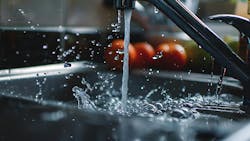water utilities are understandably frustrated when customers choose not to drink the safe water provided to them, especially when these utilities rely on this consumption as a key income stream. According to WaterWorld’s May 2023 report, retail sales of bottled water (15.9 billion gallons worth) reached an astonishing $46 billion in 2022. And the irony is that a significant portion of that bottled water likely originates from the same drinking water supplied at the tap.
Despite assurances that tap water “meets or exceeds all Environmental Protection Agency (EPA) Safe Drinking Water Act and State Department of Public Health and Environment Primary Drinking Water Standards,” many consumers still refuse to drink it. The main reason cited: Tap water “doesn’t taste good.” Consumers can go as far as saying it tastes “bad.” While pathogenic bacteria have been effectively managed, an increasing number of water providers struggle to eliminate foul-taste-causing bacteria.
Consumers have a valid concern. Until recently, there has not been a comprehensive understanding of what exactly is in their drinking water. Many utilities use chloramine for network disinfection, which is effective but can result in disinfection byproducts. An unpleasant taste may be due to excessive chlorine remaining in the system, or excessive growth of iron-oxidizing bacteria. Therefore, obtaining a thorough and accurate measurement of bacteria in the system is crucial for the industry to provide the safest and best-tasting water possible.
While larger utilities may have dedicated laboratories or water quality specialists, most rely on periodic grab samples to meet the minimum regulatory requirements. These samples, sent to labs a few times per month, are prone to errors and represent only a tiny fraction — often less than 1% — of the bacteria in the water while ignoring nearly all the bacteria that cause bad taste and odors.
Traditional lab testing also takes so long that the results offer only a snapshot of the past, rather than a complete and current picture of water quality in the present. This lag is especially problematic when the first indication of a major issue is when people get sick. Under the current system, it is often too late to prevent harm, leading to events like a typical 3-day Boil Water Advisory, which erodes public trust in tap water.
Fortunately, advancements in technology now offer solutions to many of these issues. New tools, like the BactoSense rapid online bacteria analyzer, are available to precisely quantify bacteria using advanced flow cytometry, enabling real-time monitoring of water quality and capturing nearly 100% of bacteria in the water. Some utilities might be concerned that implementing technologies like this would increase their workload. However, these advancements reduce the amount of work needed to analyze their water quality, also aligning perfectly with their core mission: to provide the highest quality drinking water to their customers.
This testing specifically offers a differentiated opportunity for utilities by delivering measurement results in only 20 to 30 minutes, compared to the one to two days required by traditional methods, while also continuously monitoring bacteria counts around the clock. This empowers utilities to perform swift action to prevent large-scale contamination events and protect public health. Moreover, operating these new analyzers should not require specialized training. It can be mastered in a day or less and integrated seamlessly into existing SCADA systems for remote monitoring and alerts.
Now, consider this: would consumers change their minds if they knew that the water from the tap had been rigorously tested using advanced flow cytometry? And what if that water tasted and looked great but was actually “direct potable reuse” — in other words, treated wastewater? Would they drink it knowing it is far safer than what they currently drink?
As utilities prepare to provide high-quality water for future generations, they are already faced with many wicked challenges. We will be able to face those challenges working together, galvanizing the efforts of utilities, forward-thinking regulators, innovative solution providers and consumers.
About the Author

Bryan Kimbell
Bryan Kimbell is business development & sales manager, North America for bNovate Technologies.
